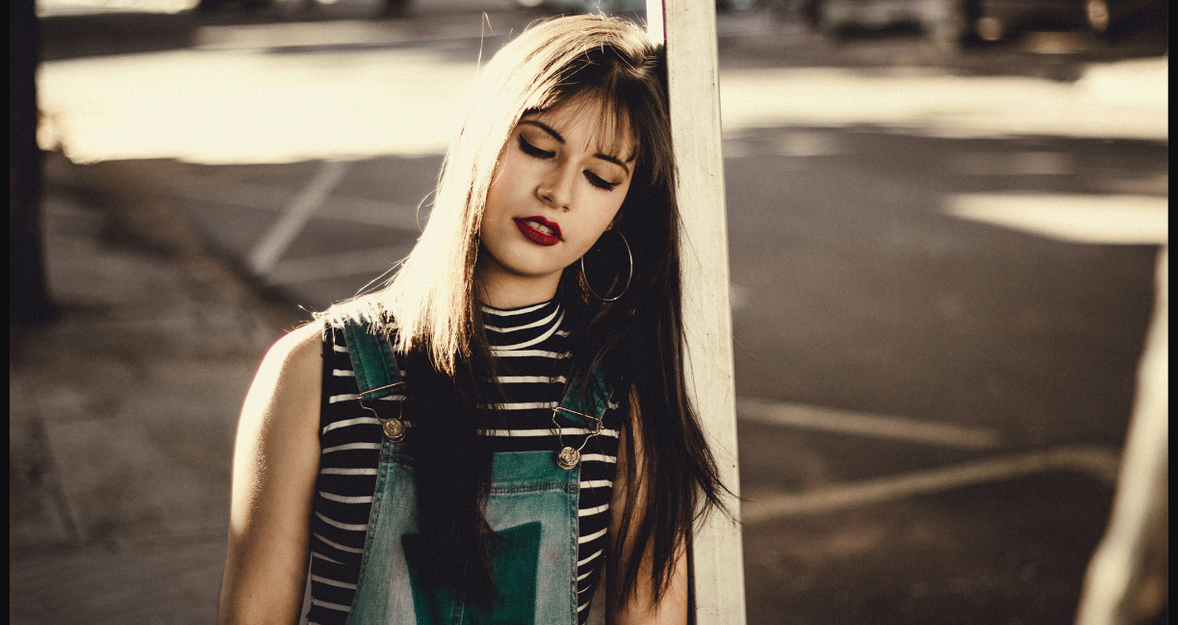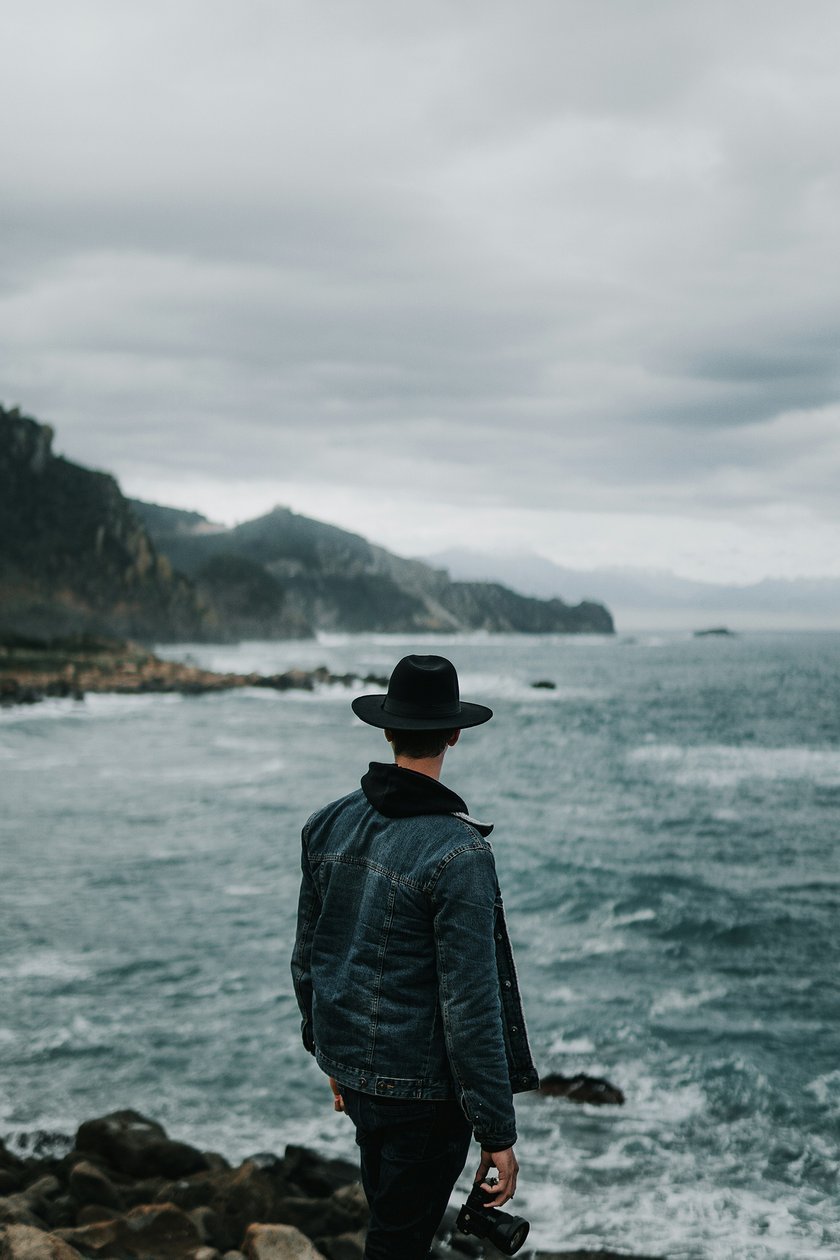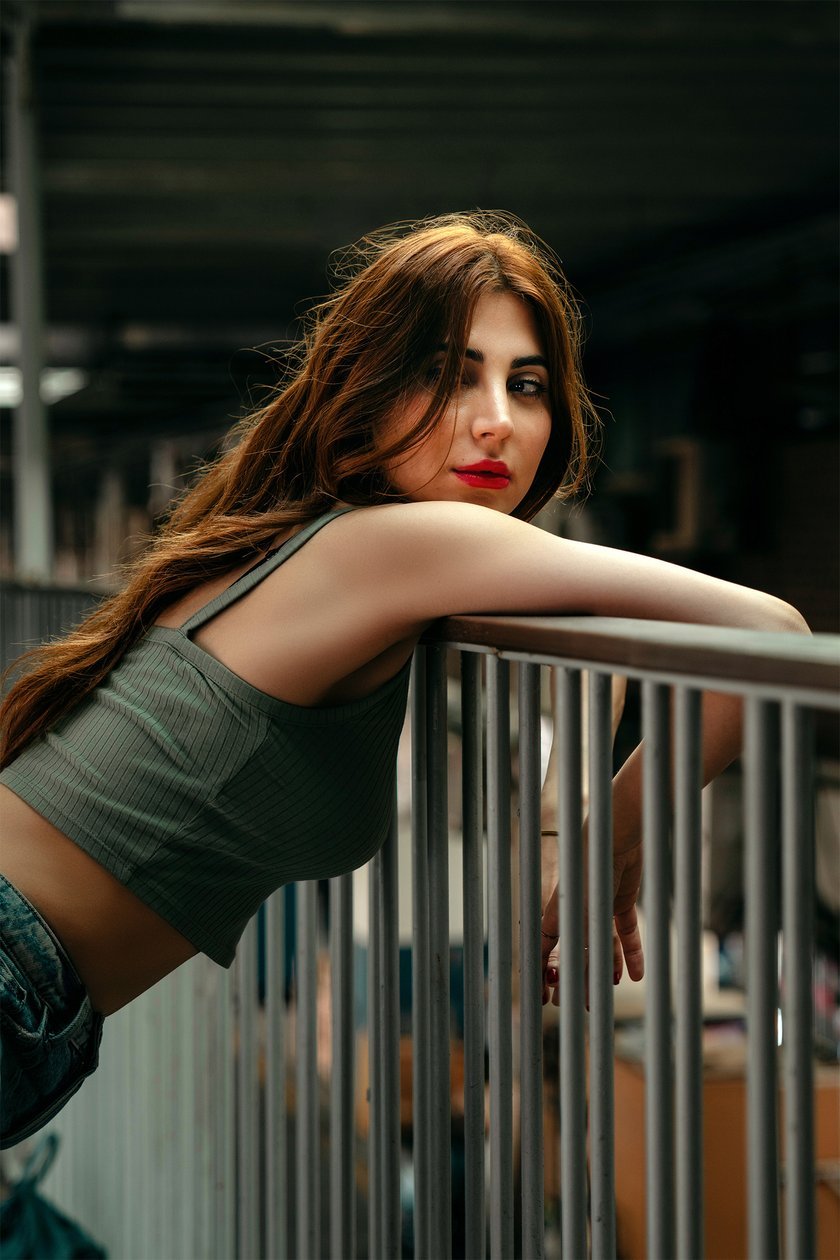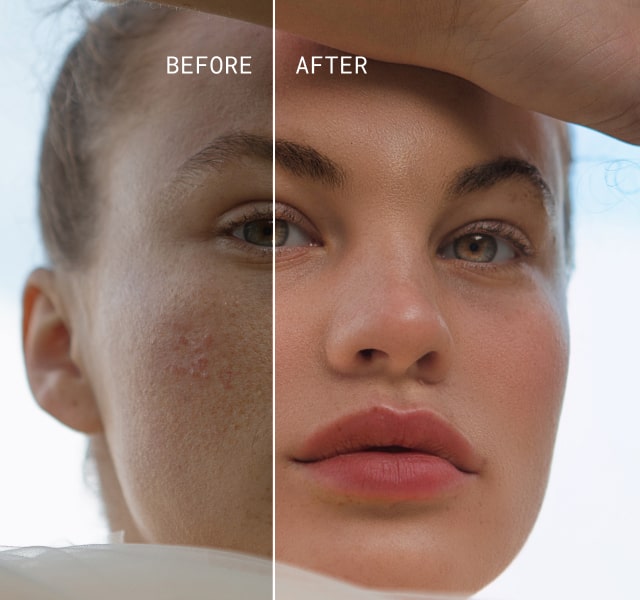Lässige Porträtfotografie: Ein Leitfaden für natürliche Aufnahmen
Januar 27, 2025

Wenn wir an Porträtfotografie denken, stellen wir uns oft ein gestelltes Modell vor, das vor einer perfekten Kulisse posiert. Entweder in einem Studio mit hochwertiger Beleuchtung, die jede sorgfältig geplante Pose einfängt, oder im Freien, wo das Modell elegante Posen am Strand oder im Park einnimmt. Doch die Porträtfotografie umfasst eine Vielzahl von Stilen, und ein einzigartiger Ansatz hat wenig mit Posen zu tun: die lockere Porträtfotografie. Dieser Stil fängt das Modell in einem natürlichen, ungezwungenen Zustand ein und stellt dabei das Timing und die Fähigkeit des Fotografen auf die Probe, echte Momente einzufangen.
Die lockere Porträtfotografie kann herausfordernd sein, da sie Intuition und ein gutes Gespür dafür erfordert, wann der richtige Moment gekommen ist, den Auslöser zu drücken. Mit den richtigen Techniken und der passenden Einstellung kann sie jedoch äußerst lohnend sein. In diesem Leitfaden erfahren Sie, was es braucht, um in der lockeren Porträtfotografie erfolgreich zu sein, und welche häufigen Fehler Sie vermeiden sollten, um authentische und wirkungsvolle Aufnahmen zu erzielen.
Vorteile eines lockeren Porträts
 Die Entscheidung für ein lockeres Porträt anstelle eines gestellten bietet einzigartige Vorteile. Auch wenn gestellte Porträts weiterhin der Branchenstandard sind, bedeutet das nicht, dass Porträtfotografen nicht auch natürlichere, spontane Motive einfangen können, um eindrucksvolle Porträts zu schaffen.
Die Entscheidung für ein lockeres Porträt anstelle eines gestellten bietet einzigartige Vorteile. Auch wenn gestellte Porträts weiterhin der Branchenstandard sind, bedeutet das nicht, dass Porträtfotografen nicht auch natürlichere, spontane Motive einfangen können, um eindrucksvolle Porträts zu schaffen.
Natürliche und entspannte Motive
Beginnen wir mit den Personen, die sich vor der Kamera unwohl fühlen. Für Menschen ohne Erfahrung im Posen kann die Kamera einschüchternd wirken: Sie wissen nicht, wohin sie schauen sollen, wie sie lächeln sollen oder was sie mit ihren Händen anfangen sollen. Das Ergebnis sind oft Fotos, die steif und unnatürlich wirken und mit denen die Personen selbst unzufrieden sind. Indem Sie zu natürlichen, spontanen Posen ermutigen, können Sie Ihr Motiv vergessen lassen, dass die Kamera überhaupt da ist, und es in einem viel entspannteren und natürlicheren Zustand einfangen.
Das gleiche Prinzip gilt für die Hautretusche – sie sollte die natürliche Schönheit des Motivs hervorheben, ohne übermäßig bearbeitet oder künstlich zu wirken. Subtile Anpassungen, die die Hauttextur und kleine Unvollkommenheiten auf vorteilhafte Weise bewahren, sorgen dafür, dass das Endergebnis authentisch und dennoch professionell aussieht.
Spielraum für Experimente
Lockere Porträts laden auch zum Experimentieren ein. Wenn Sie mit erfahrenen Models arbeiten oder bereits zahllose Porträts aufgenommen haben, verspüren Sie vielleicht den Wunsch, aus der Routine traditioneller, geübter Posen auszubrechen. Die lockere Porträtfotografie bietet genau diese Freiheit und ermöglicht es Ihnen, etwas Neues auszuprobieren und Ihr Portfolio mit spontanen, verspielten Aufnahmen in einer weniger formellen Umgebung zu bereichern.
Verbessertes Storytelling
Motive in einer natürlichen Umgebung zu fotografieren, betont den erzählerischen Aspekt Ihrer Bilder. Spontane Momente schaffen Porträts, die bedeutsam und authentisch wirken – ideal für Bilder mit einer starken erzählerischen Qualität.
Fokus auf Umgebung und Lifestyle
Lockere Porträts lenken außerdem mehr Aufmerksamkeit auf die Umgebung des Motivs und bieten so die Möglichkeit, Lifestyle-Elemente in die Aufnahme einzubringen. Dieser Ansatz kann bestimmte Themen Ihres Shootings bereichern und ist eine ausgezeichnete Wahl für Markenfotografie, bei der Lifestyle und Setting eine zentrale Rolle spielen. Dies werden wir später noch näher betrachten.
Die lockere Porträtfotografie bietet eine kraftvolle Möglichkeit, authentische Aufnahmen zu machen, die Ihr Publikum tiefer berühren als gestellte Porträts. Während sie in der perfekt inszenierten, professionellen Welt der traditionellen Porträtfotografie weniger verbreitet ist, haben lockere Porträts einen hohen Wert – insbesondere beim Fotografieren von Personen, die nicht an Kameras gewöhnt sind. Lockere Sessions helfen, dass sich die Personen entspannen, was zu natürlichen und ansprechenden Bildern führt und insgesamt bessere Porträts ermöglicht.
Beobachter- vs Teilnehmer-Pose
 Greg Williams, ein renommierter Fotograf, der die größten Prominenten der Welt ablichtet, verfolgt eine Philosophie, die stark von traditionellen Studioshootings abweicht. Statt akribisch inszenierte Sessions mit aufwendiger Ausrüstung, Garderobe und Teams von Assistenten zu organisieren, strebt Williams danach, authentische, ungestellte Momente einzufangen. Seine Methode basiert auf zwei Ansätzen: entweder als Beobachter oder als Teilnehmer in der Szene zu agieren.
Greg Williams, ein renommierter Fotograf, der die größten Prominenten der Welt ablichtet, verfolgt eine Philosophie, die stark von traditionellen Studioshootings abweicht. Statt akribisch inszenierte Sessions mit aufwendiger Ausrüstung, Garderobe und Teams von Assistenten zu organisieren, strebt Williams danach, authentische, ungestellte Momente einzufangen. Seine Methode basiert auf zwei Ansätzen: entweder als Beobachter oder als Teilnehmer in der Szene zu agieren.
Beobachter
Beim Beobachter-Ansatz nimmt der Fotograf eine „unsichtbare“ Rolle ein, ähnlich wie eine Fliege an der Wand. Der Fotograf versucht, für das Motiv so unauffällig wie möglich zu sein. Während des Shootings findet keine Interaktion zwischen Fotograf und Motiv statt; stattdessen hält der Fotograf leise Momente fest, während das Motiv seiner Aktivität nachgeht.
Vorab könnten Sie ein kurzes Gespräch mit dem Motiv führen, um eine Aufgabe zu vereinbaren, die es erledigen soll, und ihm erklären, dass Sie im Hintergrund arbeiten werden und es Ihre Anwesenheit vollständig ignorieren sollte.
Dieser Ansatz führt zu Bildern, bei denen das Motiv nicht in die Kamera schaut oder einer bestimmten Anweisung folgt, sodass sich natürliche und authentische Momente von selbst entfalten.
- Vorteile: Der Beobachter-Ansatz eignet sich ideal für das Erzählen von Geschichten, da er Momente ohne Regie authentisch einfängt. Diese Technik ist besonders hilfreich für Motive, die sich vor der Kamera unwohl fühlen, da sie sich entspannen und selbst sein können, während sie die Kamera allmählich vergessen.
- Nachteile: Ohne die Möglichkeit, Ihr Motiv zu dirigieren, kann es schwierig sein, die bestmöglichen Bilder zu erzielen. Möglicherweise stoßen Sie auf Einschränkungen hinsichtlich Beleuchtung oder Winkel. Um dies zu umgehen, sollten Sie frühzeitig am Standort ankommen, die Lichtverhältnisse prüfen und fotogene Winkel identifizieren. So wird es einfacher, hochwertige Aufnahmen zu machen, ohne aufzufallen.
Teilnehmer
Beim Teilnehmer-Ansatz interagiert der Fotograf mit dem Motiv, gibt sanfte Anleitungen oder führt Gespräche, während eine entspannte, lockere Atmosphäre aufrechterhalten wird. Dieser Stil ist nicht auf starre Posen ausgerichtet; vielmehr ermöglicht er dem Modell, sich in natürliche, ungezwungene Posen zu begeben oder vertraute Gesten auszuführen.
Vielleicht bitten Sie das Modell, sich an eine bestimmte Stelle zu setzen oder in einem gut beleuchteten Bereich zu stehen, und interagieren dann mit ihm, um Ausdrücke und Bewegungen festzuhalten, während Sie plaudern oder leichte, ungezwungene Momente fördern.
- Vorteile: Als Teilnehmer haben Sie mehr Kontrolle über die Session und können durch dezente Hinweise das Modell in optimalem Licht und in vorteilhafte Positionen bringen. Dieser Ansatz ermöglicht es Ihnen, die Persönlichkeit des Modells hervorzuheben und mit verschiedenen Winkeln zu experimentieren, während sich das Motiv wohlfühlt und ausdrucksstark ist.
- Nachteile: Das Motiv könnte etwas Zeit benötigen, um sich in die Session einzufinden, insbesondere wenn es nicht an einen lockeren Ansatz gewöhnt ist. Um dem entgegenzuwirken, sollten Sie eine „Aufwärmphase“ einplanen, in der sich das Motiv an die Umgebung und Ihre Anwesenheit gewöhnt. Aufwärmtechniken werden wir in einem späteren Abschnitt näher erläutern.
Techniken für das Einfangen natürlicher Aufnahmen
 Um authentische, ungezwungene Porträts zu erstellen, sollten Sie diese grundlegenden Techniken während Ihrer Shootings berücksichtigen:
Um authentische, ungezwungene Porträts zu erstellen, sollten Sie diese grundlegenden Techniken während Ihrer Shootings berücksichtigen:
- Natürliches Licht: Einer der wichtigsten Aspekte eines lockeren Porträts ist die Beleuchtung. Studiolicht mit seinen kontrollierten Belichtungen und seiner Präzision kann ein Foto inszeniert wirken lassen. Im Gegensatz dazu bringt natürliches Licht ein Element der Authentizität mit sich, das den spontanen Charakter Ihres Bildes unterstreicht. Nutzen Sie verfügbares Licht, sei es von einem Fenster oder im Freien, und vermeiden Sie den Einsatz künstlicher Beleuchtung. Dieser Ansatz hilft Ihren Bildern, ihre natürliche Ausstrahlung zu bewahren.
- Bewegung einbeziehen: Still vor einer Kamera zu stehen, lässt Menschen oft unsicher wirken. Dies führt zu überkorrigierter Haltung und unnatürlichen Gesichtsausdrücken. Ermutigen Sie Ihr Motiv, zu gehen, sich zu drehen oder einfache Bewegungen auszuführen, um es zu entspannen. Das Fotografieren in Bewegung bringt nicht nur die natürliche Seite des Motivs hervor, sondern verleiht den Fotos auch Lebendigkeit und Energie, was oft zu authentischeren Momenten führt.
- Interaktion mit der Umgebung: Eine weitere großartige Herangehensweise ist es, Ihr Motiv mit seiner Umgebung interagieren zu lassen. Zum Beispiel fotografierte Greg Williams Tom Hardy für Esquire, während Hardy sein Auto wusch. Das Ergebnis war eine spaßige und lebendige Bildreihe, die Hardy mit wild spritzendem Wasser einfing. Williams wechselte zwischen stillem Beobachten und leichten Anweisungen, wenn die Situation es erforderte. Überlegen Sie, welche Aktivitäten zur Persönlichkeit Ihres Motivs passen, und lassen Sie es entweder ganz natürlich handeln oder geben Sie bei Bedarf subtile Hinweise, wenn sich interessante Gelegenheiten ergeben.
- Experimentieren Sie mit Distanz und Nahaufnahmen: Variieren Sie Ihre Entfernung, um eine Vielfalt an Perspektiven einzufangen. Fotografieren Sie aus der Ferne, um das Motiv in seiner Umgebung zu zeigen, und nähern Sie sich für Nahaufnahmen, um Details wie Hände oder Gesichtsausdrücke hervorzuheben. Diese Mischung aus weiterem Kontext und intimen Details kann Ihrer Bildserie mehr Tiefe verleihen und den erzählerischen Aspekt Ihrer lockeren Porträts bereichern.
- Lächeln! Gestellte Aufnahmen beinhalten oft ernste, nachdenkliche oder neutrale Gesichtsausdrücke, die Modelle leichter umsetzen können als natürliche, lächelnde Posen. Bei lockeren Porträts hingegen geht es darum, echte, natürliche Lächeln und Gesichtsausdrücke einzufangen. Interagieren Sie mit Ihrem Modell, um es zu entspannen, und bringen Sie es zum Lachen – so wirken die Lächeln viel natürlicher als erzwungene. Im nächsten Abschnitt erfahren Sie, wie Sie genau diese entspannte Atmosphäre schaffen können. Lassen Sie uns weitermachen!
Beziehung aufbauen
 Einer der wichtigsten Aspekte für eine erfolgreiche Porträtsession ist es, eine solide Beziehung zu Ihrem Model aufzubauen. Wenn sich Ihr Motiv wohlfühlt, ist es viel wahrscheinlicher, dass Sie authentische und natürliche Momente einfangen können.
Einer der wichtigsten Aspekte für eine erfolgreiche Porträtsession ist es, eine solide Beziehung zu Ihrem Model aufzubauen. Wenn sich Ihr Motiv wohlfühlt, ist es viel wahrscheinlicher, dass Sie authentische und natürliche Momente einfangen können.
Die lockere Porträtfotografie erfordert einen anderen Ansatz als gestellte Porträts. Bei einem formellen Shooting haben Modelle oft geübte Posen und wissen genau, wie sie auf Anweisungen reagieren sollen, was die Session zu einem reibungslosen, choreografierten Prozess macht. Bei einem lockeren Shooting hingegen liegt der Fokus darauf, natürliche Ausdrücke, Interaktionen mit der Umgebung und spontane Momente einzufangen. Dieser Unterschied bedeutet, dass sich Ihr Motiv wirklich wohl fühlen muss, um „es selbst“ vor der Kamera zu sein.
1. Sei einfach natürlich!
Ironischerweise ist einer der schwierigsten Hinweise für ein Model „Sei natürlich!“, da dies oft dazu führt, dass es sich selbstbewusst fühlt. Wenn sich das Motiv nicht entspannt fühlt, kann „natürlich sein“ wie eine unlösbare Aufgabe wirken. Vermeiden Sie diese Formulierung und konzentrieren Sie sich stattdessen darauf, von Anfang an eine gute Beziehung aufzubauen. Mit diesen Tipps helfen Sie Ihrem Model, sich zu entspannen und authentisch natürlich auszusehen, ohne dass es dazu aufgefordert werden muss.
2. Springen Sie nicht sofort ins Shooting
Geben Sie Ihrem Model Zeit, sich zu akklimatisieren, bevor Sie mit dem Fotografieren beginnen. Falls es das erste Mal an diesem Ort ist, nehmen Sie sich ein paar Minuten Zeit, um die Umgebung gemeinsam zu erkunden, oder trinken Sie zusammen einen Kaffee und plaudern Sie. Zwar können Sie über das Shooting sprechen, aber es ist oft besser, mit einem lockeren Gespräch zu beginnen, um Ihr Gegenüber kennenzulernen. Gemeinsame Interessen zu finden, kann wahre Wunder bewirken, um anfängliche Nervosität zu lösen. Es gibt Ihrem Model außerdem die Möglichkeit, sich zu entspannen und Kraft zu tanken, bevor Sie loslegen.
3. Unterhalten Sie sich während des Shootings
Halten Sie das Gespräch während der Session am Laufen. Wenn die einzige Kommunikation aus einer Reihe von Anweisungen besteht, könnte die Erfahrung steif und förmlich wirken. Stattdessen sollten Sie allgemeine Gespräche führen, Ihr Model besser kennenlernen und die Session so weniger wie eine Aufgabe wirken lassen. Falls Sie unsicher sind, was Sie sagen sollen, stellen Sie Fragen zu ihrem Hintergrund oder ihren Interessen. Sobald das Gespräch läuft, werden sich beide Seiten wohler fühlen.
4. Beginnen Sie mit bequemen Posen
Sparen Sie sich Ihre aufwendigeren Ideen für später im Shooting auf. Große Ausdrücke oder energiegeladene Posen können zu Beginn überwältigend wirken. Geben Sie Ihrem Model Zeit, sich einzugewöhnen, indem Sie mit bequemen, natürlichen Posen starten. Mit der Zeit können Sie dann zu ausdrucksstärkeren Aufnahmen übergehen, sobald Ihr Model im Fluss ist.
5. Setzen Sie auf Humor und Lachen
Schaffen Sie eine lockere Atmosphäre, indem Sie selbst offen und ausdrucksstark auftreten. Wenn Sie zu ernst und zurückhaltend sind, könnte Ihr Model Schwierigkeiten haben, sich zu entspannen. Betrachten Sie sich selbst als Spiegel: Indem Sie freundlich und energiegeladen sind, animieren Sie Ihr Model, genauso zu reagieren. Humor und Lachen sind hervorragende Mittel, um das Eis zu brechen und authentische Lächeln und Gesichtsausdrücke hervorzurufen.
6. Geben Sie positives Feedback
Ermutigung trägt wesentlich dazu bei, Ihr Model entspannt zu halten. Geben Sie während der Session positives Feedback und lassen Sie Ihr Model wissen, dass es großartige Arbeit leistet. Zeigen Sie ihm gelegentlich einige Ihrer Lieblingsaufnahmen und heben Sie hervor, was Ihnen daran gefällt. Das gibt Ihrem Model Sicherheit, dass es Ihre Erwartungen erfüllt, und stärkt sein Selbstbewusstsein für den weiteren Verlauf des Shootings.
Indem Sie auf diese Weise eine Beziehung aufbauen, helfen Sie Ihrem Model, sich zu entspannen, und bringen seine natürliche Seite zum Vorschein – so können Sie die ungezwungenen, authentischen Aufnahmen machen, die die lockere Porträtfotografie so kraftvoll machen.
Fazit
Die lockere Porträtfotografie ist eine fantastische Möglichkeit, authentische Momente einzufangen und Ihrem Publikum kraftvolles Storytelling zu vermitteln. Sie ist besonders vorteilhaft für Menschen, die sich vor der Kamera unwohl fühlen, da gestellte Aufnahmen oft zu unnatürlichen oder steifen Ausdrücken führen können.
Gehen Sie Ihr Shooting an, indem Sie sich für den Beobachter- oder Teilnehmerstil entscheiden – beide bieten ihre eigenen einzigartigen Vorteile. Verwenden Sie natürliches Licht, um die Authentizität Ihrer Aufnahmen zu verstärken, und konzentrieren Sie sich vor allem darauf, eine gute Beziehung zu Ihrem Motiv aufzubauen, damit es sich wohlfühlt.
Die lockere Porträtfotografie macht unglaublich viel Spaß und bietet grenzenlose Möglichkeiten für Kreativität – also haben Sie Freude am Experimentieren!
